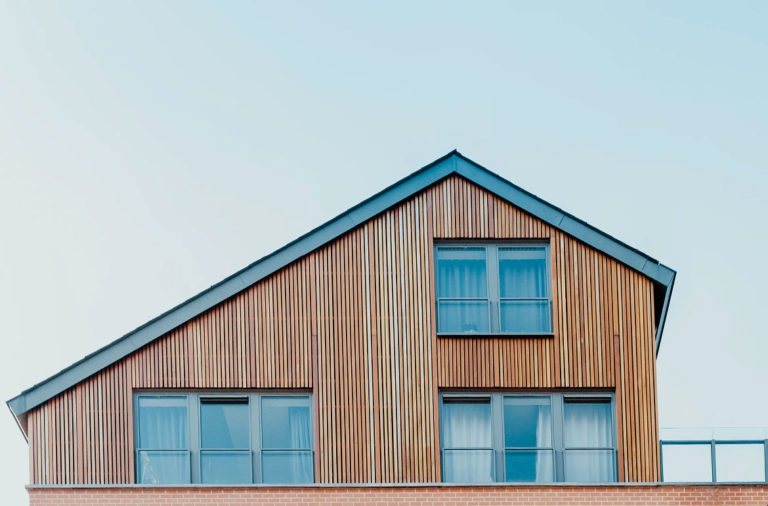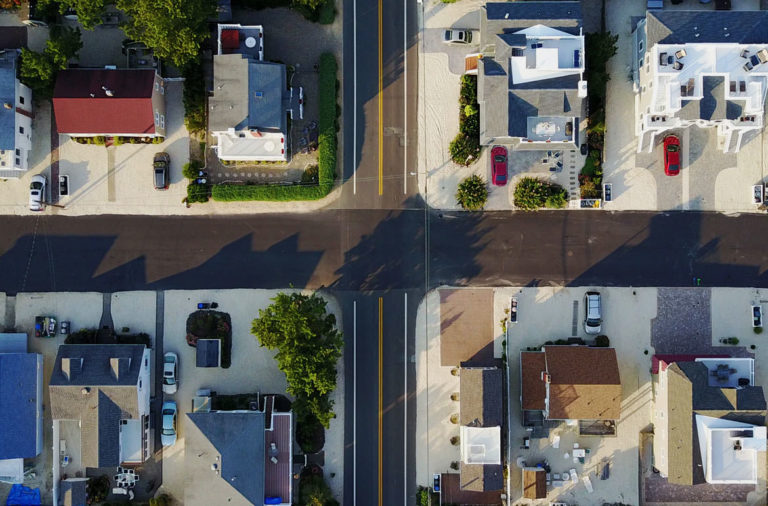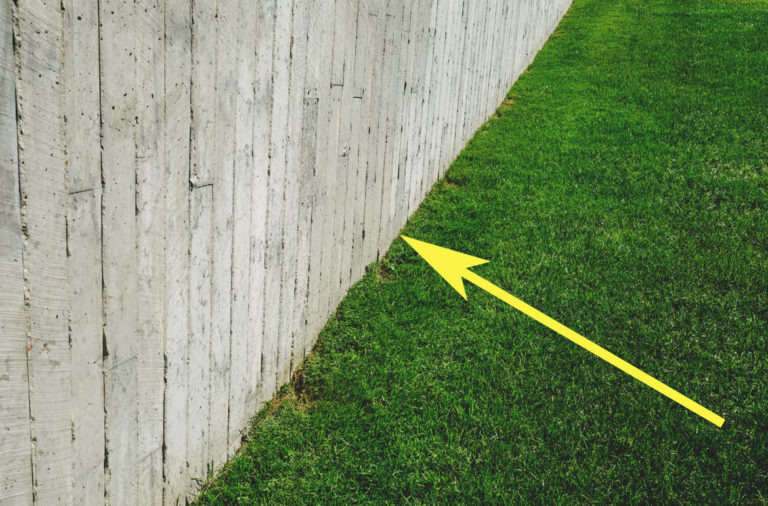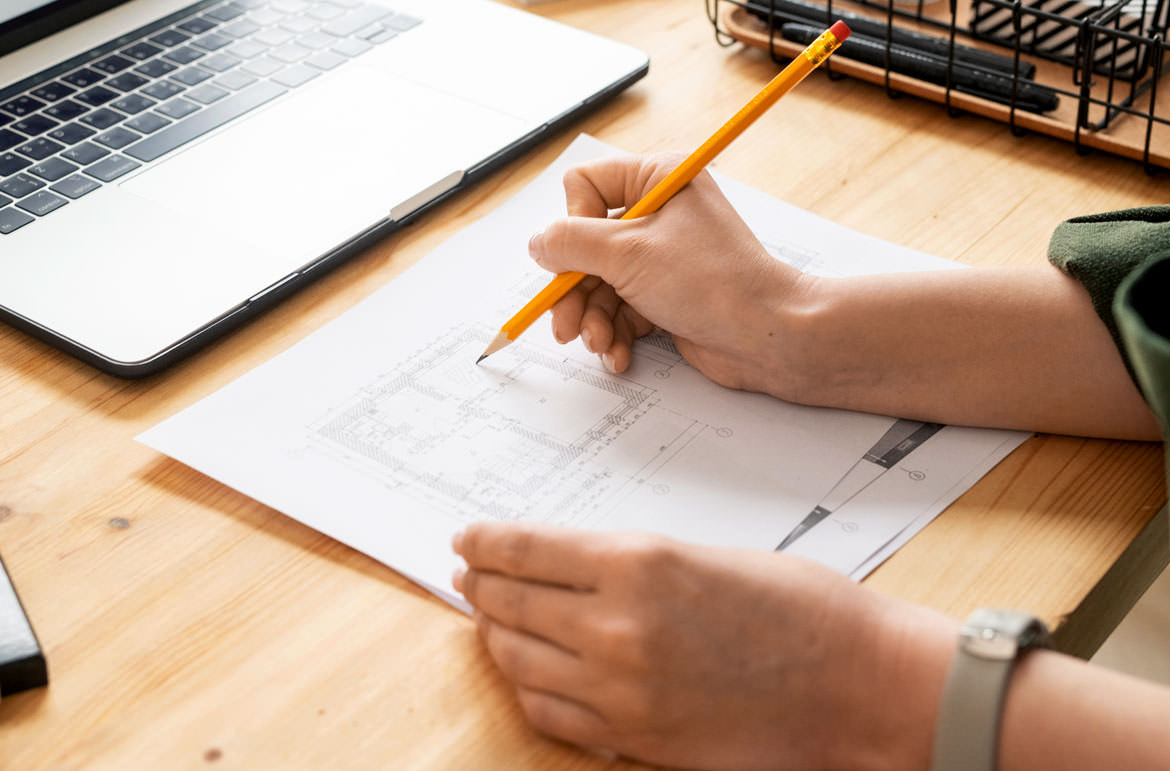
You may need the assistance of a designer, such as an architect, when building your granny flat. So, what makes a great granny flat architect?
A great architect from your first meeting should work in an attentive way. So they can find the answers to your wishes. Taking into consideration your requirements, land, and budget.
Keep on reading to find out where to look for a great architect, and how their process will work.
DON'T PAY A FORTUNE FOR YOUR GRANNY FLAT. Find out how to deal with council and build a granny flat for the lowest cost possible. Learn More.
Architects That Specialise in Granny Flats
Firstly, lets start with our recommended granny flat architects.
Below is a list of architects that specialise in granny flats in each state of Australia. They will work directly with you, or your building team.
NSW
- Infinite Architecture Design – 0421 723 667.
- Maitland Butler Architects – (02) 9653 1037.
- Anderson Architecture – (02) 9319 0224.
- Bibo Build – (02) 9160 2222.
- Harley Graham Architects – (02) 6680 9690.
- Studio 203 – (02) 9555 540.
- Studio HmD – (02)9593 4778.
- The Site Foreman – 1300 728 006.
- Zainzeh – 0449 952 700.
- Hebden Architects – (02) 9799 5252.
- Threshold Studio – 0430 11 556.
QLD
- Arkspace Architects – 0411 028 949.
- BAA House – (07) 3137 0222 / 0409 577 705.
- Billy Dawson Architects – (07) 3708 1084.
- Dion Seminara Architecture – (07) 3899 9450.
- One Stop Granny Flats – (07) 3103 3297.
- Earthsong Architects – 0418 811 375.
- Mark Wilson Design & Build – 0404 888 452.
- Russell Watkins Architects – 0418 988 806.
- A’arkate’kt A’arkate’kt – 0402 976 184.
- James Stephenson Architect – 0411 627 477.
- Architectural House Designs Australia – 1300 599 617.
VIC
- Architest – (03) 9429 2791.
- Made Architects Studio – (03) 7018 3427 / 0431 734 135.
- LAX Studios – (03) 9662 9315 / 0404 343 260.
- Ark8 Architects – (03) 8609 1972.
- Geselle Architecture Pty. Ltd. – 0421 833 083.
- BP Architects – (03) 9525 3780.
- KiR Architecture – 0426 188 744.
- Auhaus – (03) 9410 4733 / (03) 9428 4126.
- Ardent Architects – (03) 9889 3311.
- Cortese Architects – (03) 9813 1727.
SA
- Proske Architects – (08) 8271 0100.
- Energy Architecture – (08) 8410 4999.
- Williams Burton Architects – (08) 8223 1177.
- Flightpath Architects – (08) 8211 6355.
- Nelson Architects – (08) 821341 4434.
- Khab Architects – (08) 8227 0056.
- C4 Architects – (08) 8410 4557 / 0428 860 692.
- Habitable Places Architects – (08) 8232 9925.
- Sims Architects – (08) 8223 3125.
- Hodgkison – (08) 8236 2900.
TAS
- Green Design – (03) 9224 6810.
- Linardi Design & Architectural Service – 0417 878 723.
- Morrison & Breytenbach Architects – (03) 6231 9093.
- JAWS Architects – (03) 6223 4366.
- Dock 4 Architects – (03) 6231 0469.
WA
- WA Design & Building Group – 0412 199 975.
- Caeser Archidanc – 0408 011 868.
- Scanlan Architects – (08) 9321 0166.
- Mountford Architects – (08) 8227 8664.
- Whitehaus – (08) 9226 3236.
NT
- Hodgkison – (08) 8981 9299.
- Bennett Architecture – (08) 8948 4607.
- Rossi Architects – (08) 8947 1513.
- Troppo Architects – (08) 8981 9585.
- Tangentyere Design – (08) 8952 9110.
ACT
- Studio 203 – 0431 333 411.
- Adhami Pender Architecture
- Mather Architecture – (02) 6247 8209.
- Joanna Nelson Architect – (02) 6248 0068 / 0438 658 360.
- Philip Leeson Architects – (02) 6295 3311.
Why Architects Are a Great Choice to Design Your Granny Flat
Choosing an architect to design your granny flat can be one of the most difficult, but important decisions that you make. It’s the deciding factor as to whether you will get the best possible building on your land.
Why? Well, the architect is the person who will help you to design your granny flat, and design is not just about having expensive, fancy, ‘bits and pieces’.
Instead, design is more about what you personally like and do not like, as well as the purpose for your granny flat, and how to make that happen on your parcel of land.
Below are tips on how to know when you have found yourself a great architect who can achieve all of this.
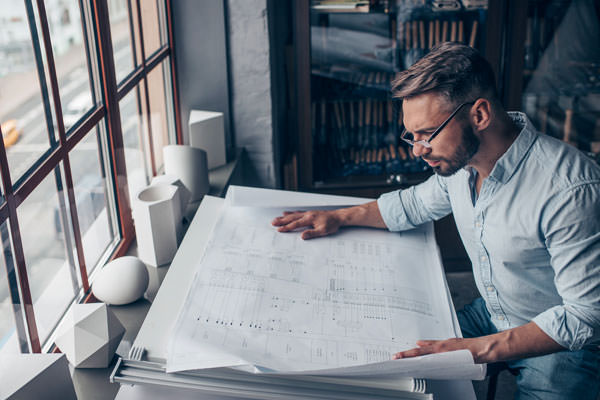
Tips for a great result working with an architect
- Firstly, Pay them to draw you a trial of your design idea – Just a simple sketch portraying what envision can show so much. You will be able to tell if it meets your intentions. If they are way off your desires, feel free to walk away.
- Do some fact-finding – If you find an architect you like, take your time do your homework on them:
-
- Become familiar with them – Choose how you prefer to develop a relationship with them – either meeting face-to-face, speaking on the phone, or sending emails. Use this method to find out more about them.
- Get their references – You can get these from the architect themselves, or any mutual acquaintances you share. Then, be sure to research those references.
- Ask if you can view earlier jobs they have done – It’s best if these projects are similar to yours. It’s even better if you can see one still being constructed, one that was just finished, and another that was completed 5+ years ago.
- Make sure they are registered with the Board of Architects.
- Look over their records of performance at your State’s licensing authority.
- Trust your natural “gut” feeling – When you hire an architect, you need to remember that they are going to be in your personal life for some time.
So, trust the gut feeling, by asking yourself these questions:
- Do you feel that they are trustworthy?
- Do you feel that they are being genuine and truthful to you, instead of just telling you what they think you should or want to hear?
- Do you feel that they have, and will continue to, speak to you about their procedures, their predicted timeframes, and their communication techniques?
- Do they make you feel secure – that they are experienced, and will take care of your project, so you have full confidence leaving it in their hands?
- Do they communicate well? Have they listened to you – actually shown you that they are properly listening to what you want?
- Does everything feel like things are in order? Like things will stay arranged?
- Do you feel as though they wish to understand you, your living arrangements, and the way you want your granny flat designed?
- Do you feel like you can give them your opinion, and they will not take it poorly? So you can work together to create the granny flat you desire, instead of just being placed in a box that’s alike every person they’ve worked with before, giving you a result that’s much the same?
- Direction – Your architect is hired for their intelligence, experience, and skill. So, they should be able to direct you from where you currently are to where you want to get.
This elaborates on the point I made before, but you should definitely see that they want to meet your desires. Ways they will show this is by:
- Finding out particular details from you, such as what you want to achieve.
- Telling you what they expect and need from you.
- Sharing advice with you, including how accomplishable your goal is.
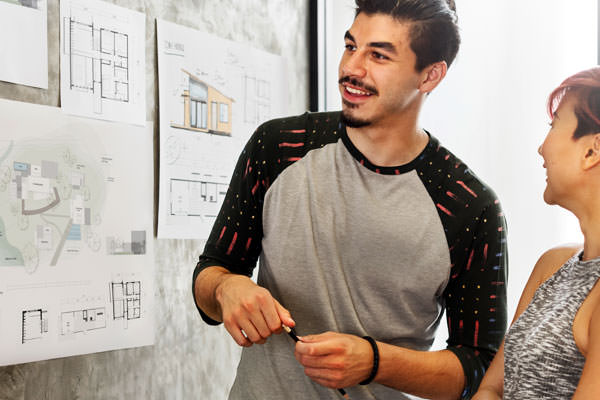
Being able to incorporate your feedback is a sign of a great architect
- Attentiveness to your budget – An architect should not find it their right to be working on your design, it should be their pleasure. If they show they care about you spending your money, this means that they will tell you not what you want to, but what you must, hear.
The warning sign is easy to see – if they don’t discuss your budget, they are probably not thinking about it.
- Experience – The architect will be working very close with your Council, so it’s critical they know their regulations. To test this, learn the rules for your region, then ask them a few questions. If they don’t have the answers, they probably have little experience…
If you still find yourself unsure, there’s no rule saying that you must hire only one architect for your entire project (that is, unless you sign a contract telling you otherwise).
So, you can always work out a deal for partial services.
If you do sign an agreement for a complete service, make sure that it enables you to:
- Cease it at any time, whilst still being able to use any work that you have already paid for, and they have handed to you.
A way to look at this is as a trade of value and an establishment of trust. As a great designer will hold in high regards the way you have trusted them, and in exchange, you will appreciate their skill.
What Do Architects Do that Building Designers and Draft People Don’t
An architect is more expensive than a drafter, but their higher level of education and qualification equates to a higher price-tag.
To legally be able to call yourself an “architect” in Australia, you must be “board-registered”. This means that you must have:
- Completed a university degree (generally 5 – 6 years), then
- Completed the obligatory amount of on-the-job experience (a minimum of 2 years), then
- Gained a pass in a written examination, then
- Gained a pass in an interview examination, then
- Re-registered every year, which involves officially declaring you are fit to practice.
In the time an architect studies, they become a specialist in design. They are also taught to draw buildings very well, but their greatest skill is:
- Knowing how to make the best of every option there is to design for your site. This expertise can be seen in these architecturally designed granny flats.
Essentially, they know more about “solving problems” on tricky sites. They can also help you make the most of your environment, by using passive solar or innovative design.
On most occasions, an architect will work with you in a different manner than a drafter, which takes more time.
They tend to:
- Spend longer on design – As design is their skill, they do a lot more exploring during this phase. This includes questioning you, your lifestyle, and what you want from your granny flat.
- They tend to do more drawings – As they have such a passion for design, they speak through multiple drawings.
Now, drafting and designing are different, but drafters can do a great job at drawing as well.
“Granny Flat Designers – The Definitive Guide” gives you a detailed look into both trades if you want more of a breakdown.
What Needs to be Included in Contemporary Granny Flats
A few things should be included in a contemporary granny flat. These are:
- Open Spaces, including Open Plan Kitchens.
- High Ceilings.
- Low Lying Furniture.
- Large Windows, Natural Light, and Energy Efficiencies.
- Connected Indoor/Outdoor Living Areas.
- Innovative Space, designed for the people who are going to be living in there in mind.
- Clean, Minimal Looks, such as Negative Spaces, or Pocket Doors, and
- Last, but certainly not least, it is important to declutter. This will help you achieve the above, and also give you more floor space – as much as you can, keep things off the floor.
For images to inspire you, and ideas on how you can fit this all into one granny flat, Contemporary Granny Flats is the place to go.
Places to Find Inspiration
There are sites online with pictures of architecturally designed granny flats for your inspiration. These include:
- Houzz Most Popular Granny Flat Design Ideas.
- Pinterest’s Best Granny Flat Images.
- HiPages Granny Flat Design Ideas, and
- The Design Files – This ha stunning work done by architects, both to main homes and granny flats.
I also found this great article by Interiors Addict, where an architect talks about 15 apps to use for inspiration.
The Process of an Architect to Design Your Dream Granny Flat
Most architects follow a similar process when designing your granny flat. They involve distinct steps, each which provides you an opportunity to develop your design to a different extent of detail.
These are:
Initial Consultation (Pre-Design, Achievability, and Site Analysis).
You will first meet and discuss your ideas for your granny flat. And you should bring as much information as possible to portray your vision – photographs, website links, Pinterest boards, or anything else that expresses your wants and needs.
The architect should be able to balance your vision with your budget, site constraints, and your local Councils regulations, to conclude what is possible for you to achieve.
After this initial consult, the architect will visit your site, and:
- Take note of your land conditions, constraints, and possibilities.
- Undertake an exploratory evaluation of development regulations and establish whether any specialist consultants, such as arborists, will probably be needed.
- Organise a land survey, and compose drawings of any buildings that are already on the property, using both photographs and on-site measurements.
An architect should offer this phase as a separate package – one that you can use to investigate your options, and find out how achievable your vision is, without having to commit long-term if you’re still undecided.
Idea/Design
During this phase, the architect should begin asking you the big questions, such as:
- What are the most important spaces in your home?
- How do they connect with each other?
- How do you live in these spaces in your main home?
This shows that they are trying to understand you, the way you live, what you want and need in the granny flat, and ultimately how the granny flat needs to fit into your life.

Ensure the ideas are on track to what you ultimately want
They will analyse your answers to these questions, by providing rough sketches. So, you will be able to discuss whether the formation and arrangement of the granny flat satisfies your requirements, while still welcoming the constraints of your land.
At this stage, they may also ask for your:
- Engineers report – This covers, if building on piers, a soil test, that specifies how large your concrete footings must be. Or, if building on a concrete slab, verifies these particulars, such as reinforcement and strength of concrete required.
- Land survey – This shows the heights of your land, and where your services are located.
These assist an architect with providing you with construction ready plans, as they allow them to do adequate investigations, reducing your risk of exposing yourself to extra costs for things such as:
- Site preparations.
- Bushfire Attack Level (BAL) requirements.
- More engineering needed due to Geotechnical reports.
- Sewerage, plumbing, or electrical improvements, etc.
Again, an architect should offer this is a separate service, allowing you to see some of your options for design, without having to commit to anything in full.
Developing the Design
Once you have agreed upon the idea for the design, the architect will perfect their design, integrating specific feedback from you, and any specialist external consultants (i.e. the engineers advice).
They will be able to provide you with intricate drawings, including CAD drawings. The drawings will have plans, sections, and elevations that distinctly describe every space of the granny flat.
They may also begin to assemble sample boards of materials and finishes, which they will use to ask you to make many different selections, such as:
- Floor coverings.
- Paint colours.
- Light fittings.
- Bench tops.
- Doors.
- A shower head.
- Taps.
- Kitchen appliances, and more.
When trying to choice what to put where and with what, you might find it useful to look at how I took note of my costs and set my budget.
By this stage, you should be getting a strong grasp of how your granny flat will look and feel.
Development Approval
This phase focuses on the design meeting all of your local Councils’ regulations, and gaining their approval.
A great architect will provide many drawings, diagrams, reports, and more, all of which will be approved by Council. Many may also assist you with submitting your application to Council.
Construction Ready Plans
This is the last phase, and it involves preparing the design that you have approved, and handing it over to who you have chosen to build your granny flat.
This could be a building company, or directly to you, if you are building your own granny flat.
These designs will include a lot of detail, such as:
- Levels.
- Sections.
- Elevations.
- Specifications such as the quality of materials and finishes, and construction work required.
Conclusion
Choosing a great architect will result in you getting highly detailed drawings, which will build your dream granny flat.
It’s important to put a lot of thought into this choice – their knowledge is worth so much more than their cost.



